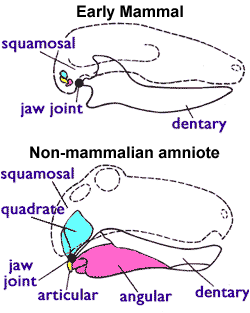Evolution of mammals
Criticism of Copyright
Copyright law has been a subject of intense debate and criticism over the years. Critics argue that the current copyright system, particularly in the United States and European Union, often stifles innovation, restricts access to information, and serves the interests of copyright holders at the expense of the public good.
Overview[edit | edit source]
Copyright is a legal concept, giving the creator of original work exclusive rights to its use and distribution, usually for a limited time, with the intent of enabling the creator to receive compensation for their intellectual investment. Copyright law varies by country but generally grants copyright holders the right to control how their works are used, reproduced, and distributed.
Criticism[edit | edit source]
Criticism of copyright law centers on several key issues:
Overly Broad and Long Copyright Terms[edit | edit source]
Critics argue that the length of copyright protection—life of the author plus 70 years in many jurisdictions—excessively benefits copyright holders and limits the availability of works to the public domain. This can hinder cultural and educational advancements by restricting access to historical, literary, and scientific works.
Impact on Innovation[edit | edit source]
The current copyright system is often criticized for hampering innovation. Critics claim that overly restrictive copyright laws can prevent new creators from building upon existing works, thus slowing the pace of technological progress and artistic development.
Digital Rights Management (DRM)[edit | edit source]
DRM technologies restrict how digital content can be used and shared, even for purposes allowed under fair use doctrines. Critics argue that DRM limits consumers' ability to use content in legally permissible ways, such as for commentary, criticism, or educational purposes.
Copyright Trolling[edit | edit source]
Copyright trolling, where entities aggressively pursue copyright infringement claims to earn settlements, has been criticized for targeting individuals and small entities disproportionately. This practice can discourage content creation and sharing due to fear of litigation.
Global Inequities[edit | edit source]
The global copyright system is criticized for creating inequities between countries, with wealthier countries setting the terms that often disadvantage creators and consumers in developing countries. This can limit access to educational materials and cultural works, exacerbating global knowledge gaps.
Reform Proposals[edit | edit source]
Proposals for reforming copyright law include reducing copyright terms, expanding fair use exceptions, reforming or abolishing DRM, and implementing more equitable international copyright agreements.
Conclusion[edit | edit source]
While copyright is designed to protect creators' rights and encourage the production of new works, its current implementation is often criticized for failing to balance these goals with the public interest. Reforming copyright law to address these criticisms is a complex challenge that requires careful consideration of the diverse interests involved.
Evolution of Mammals
The evolution of mammals has fascinated scientists for centuries. Mammals are a diverse group of animals, with more than 5,000 species currently identified, ranging from tiny bumblebee bats to the massive blue whale. Their evolution is a testament to the adaptive nature of life on Earth.
Origins[edit | edit source]
Mammals are vertebrates belonging to the class Mammalia. They are distinguished by characteristics such as warm-bloodedness, hair or fur, and, in females, mammary glands that produce milk for feeding their young. The earliest mammals are believed to have evolved from therapsid reptiles during the late Triassic period, around 200 million years ago.
Triassic Period[edit | edit source]
The transition from reptile-like ancestors to true mammals was gradual, with many intermediate forms. Early mammals were small, nocturnal creatures that likely fed on insects. This lifestyle may have helped them survive the mass extinction event at the end of the Cretaceous period, which wiped out the dinosaurs and allowed mammals to flourish.
Cenozoic Era[edit | edit source]
The Cenozoic Era, often referred to as the Age of Mammals, saw the rapid diversification and evolution of mammals into the myriad forms we see today. Following the extinction of the dinosaurs, mammals began to occupy a wide range of ecological niches, evolving into herbivores, carnivores, and omnivores.
Adaptive Radiation[edit | edit source]
Adaptive radiation played a key role in the evolution of mammals. This process, where organisms rapidly evolve into a wide variety of forms to exploit different ecological niches, led to the emergence of the major mammalian groups, including monotremes, marsupials, and placental mammals.
Evolutionary Milestones[edit | edit source]
Key milestones in mammalian evolution include the development of differentiated teeth, the evolution of the mammalian ear from jaw bones, and the development of endothermy (warm-bloodedness). These adaptations allowed mammals to become more efficient predators, to exploit a variety of dietary niches, and to regulate their body temperature, aiding their survival in diverse environments.
Conclusion[edit | edit source]
The evolution of mammals is a complex process that illustrates the adaptability and resilience of life. From small, inconspicuous creatures that lived in the shadows of dinosaurs, mammals have evolved into the dominant class of animals on Earth, capable of inhabiting nearly every ecosystem.
Navigation: Wellness - Encyclopedia - Health topics - Disease Index - Drugs - World Directory - Gray's Anatomy - Keto diet - Recipes
Search WikiMD
Ad.Tired of being Overweight? Try W8MD's physician weight loss program.
Semaglutide (Ozempic / Wegovy and Tirzepatide (Mounjaro) available.
Advertise on WikiMD
WikiMD is not a substitute for professional medical advice. See full disclaimer.
Credits:Most images are courtesy of Wikimedia commons, and templates Wikipedia, licensed under CC BY SA or similar.
Contributors: Prab R. Tumpati, MD




